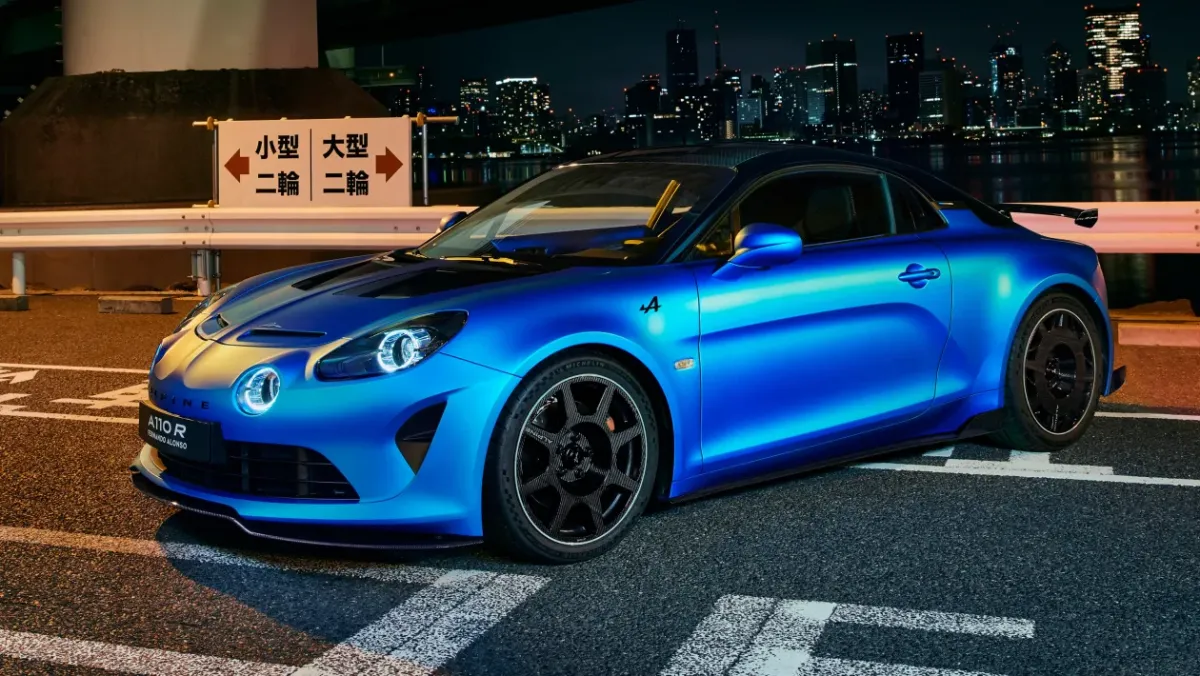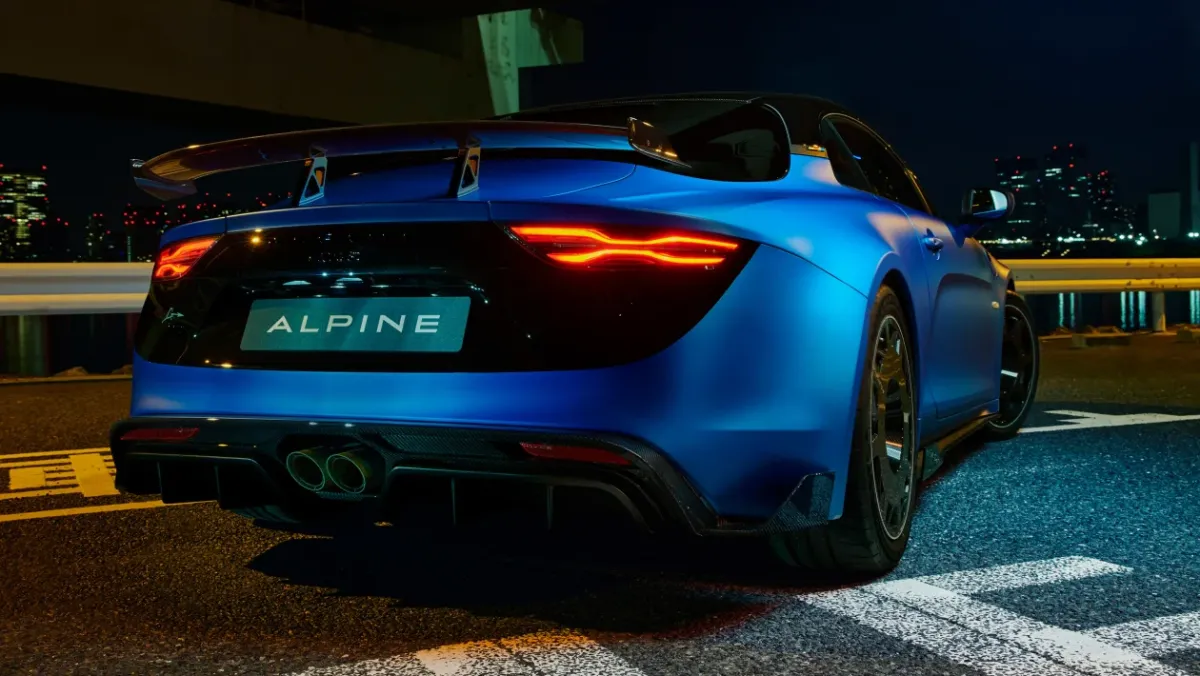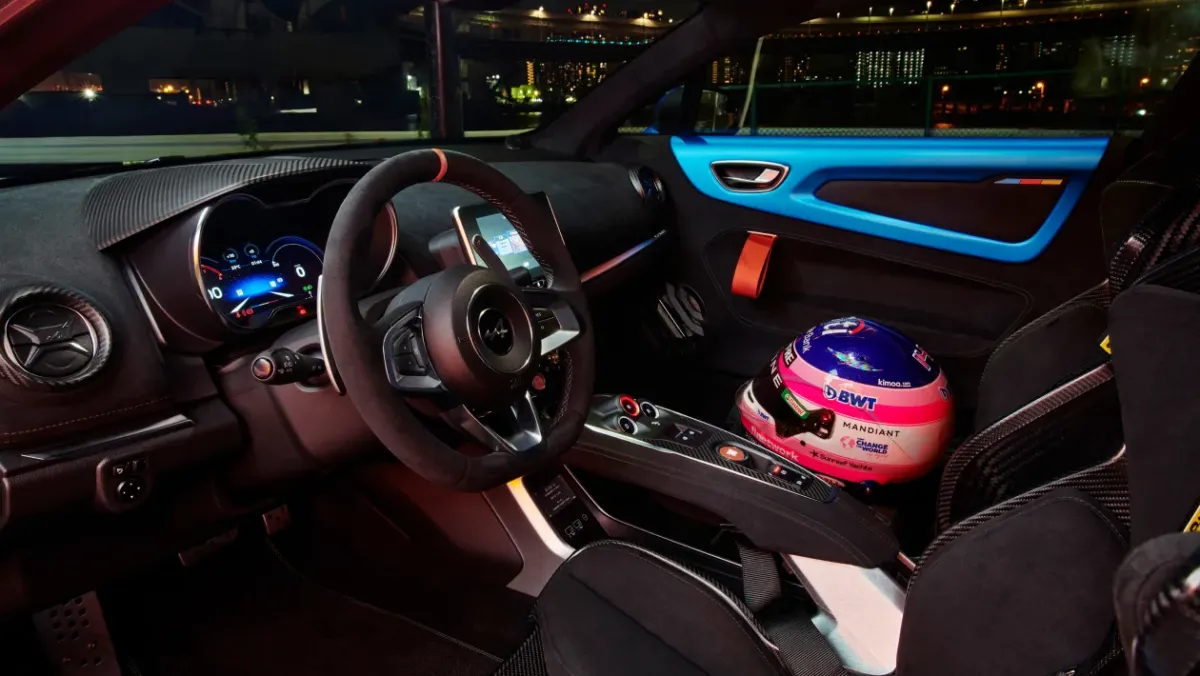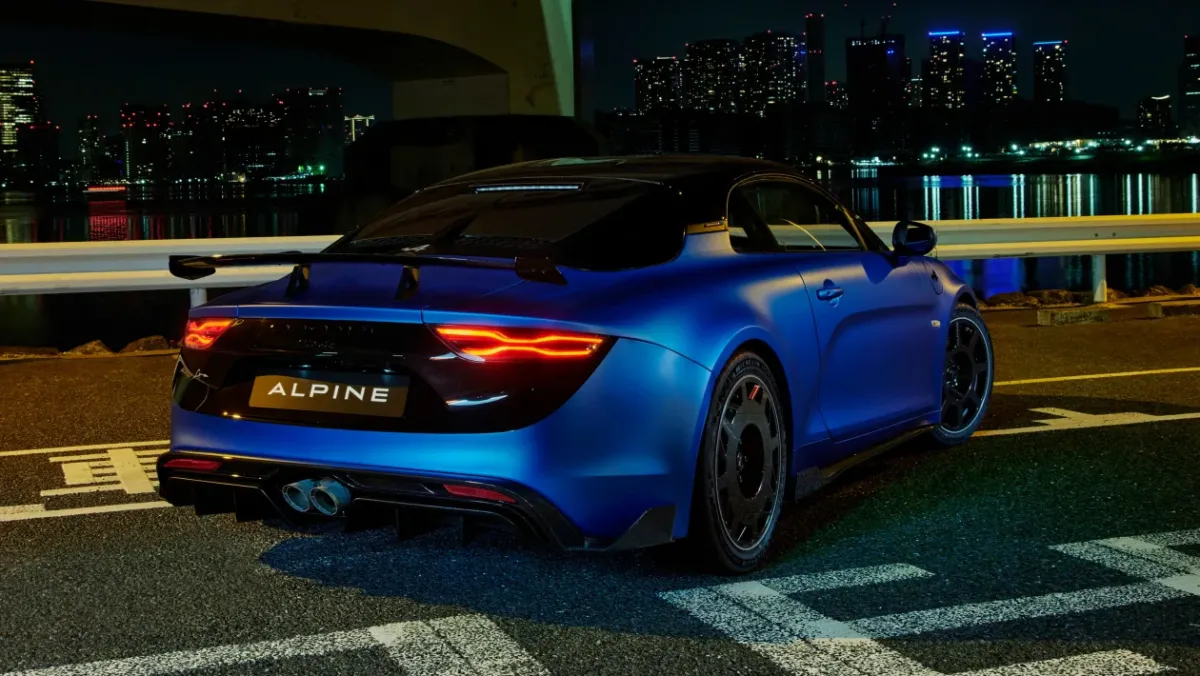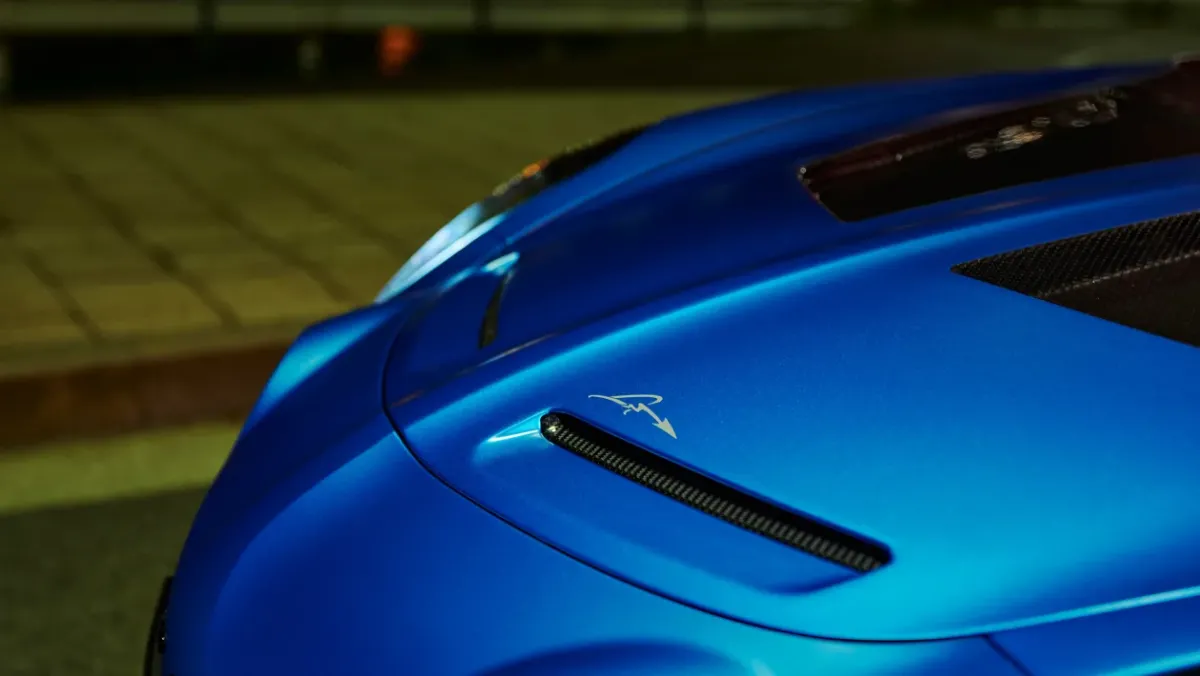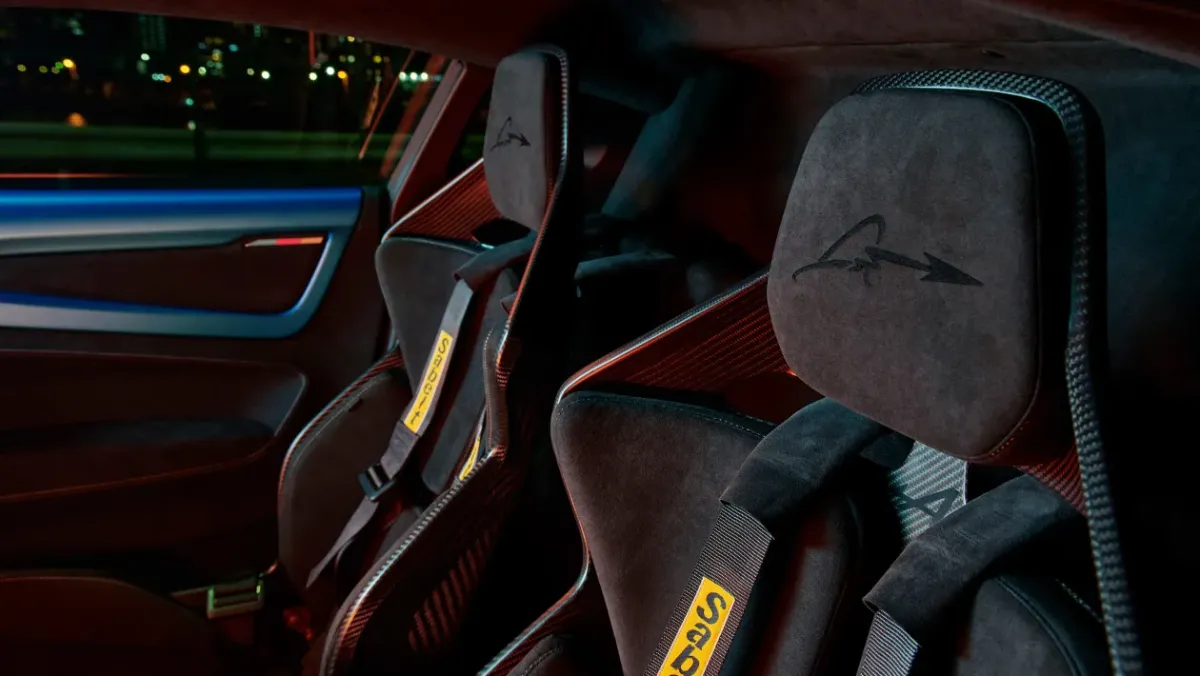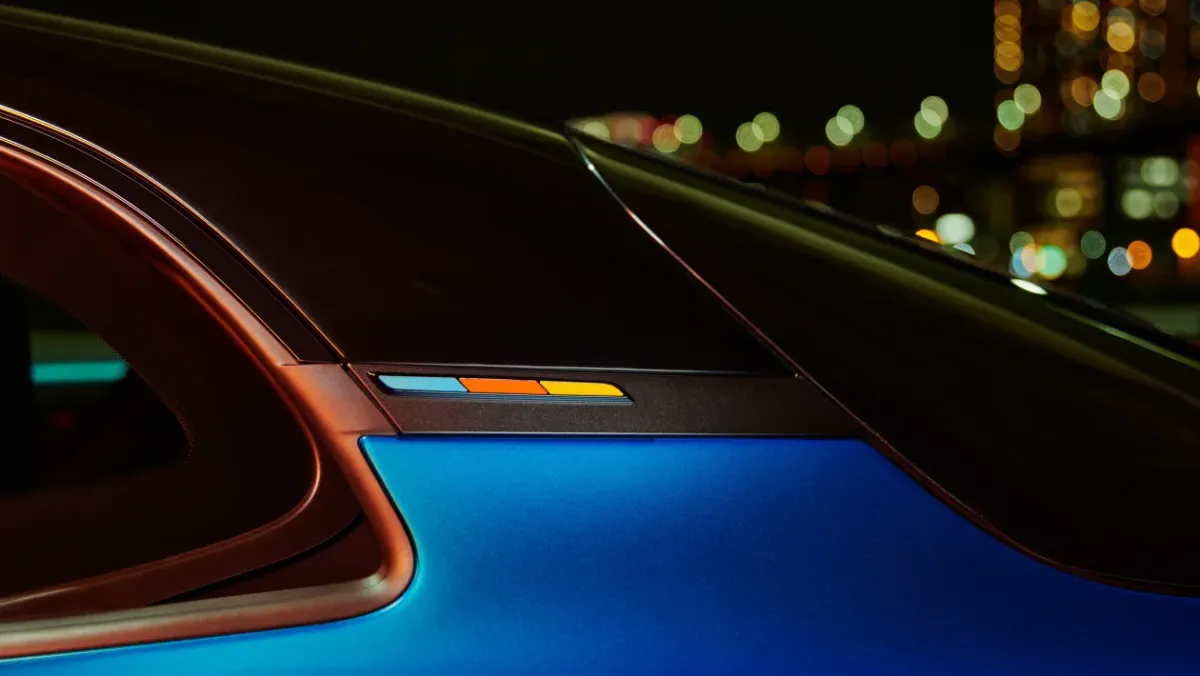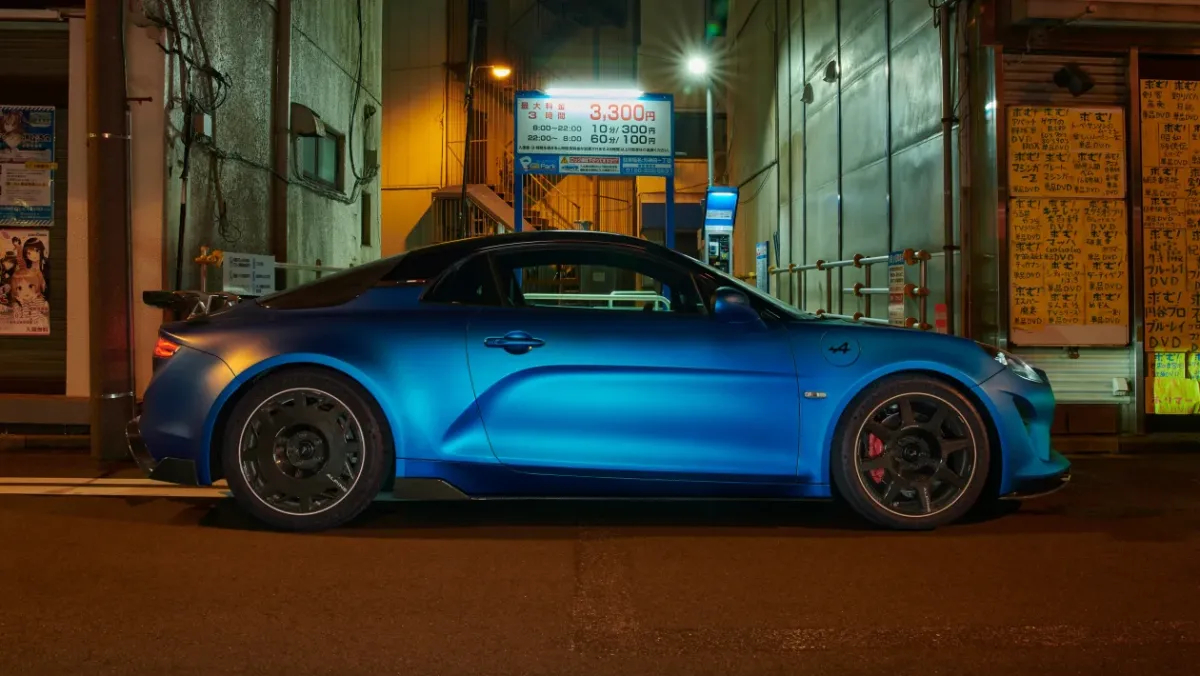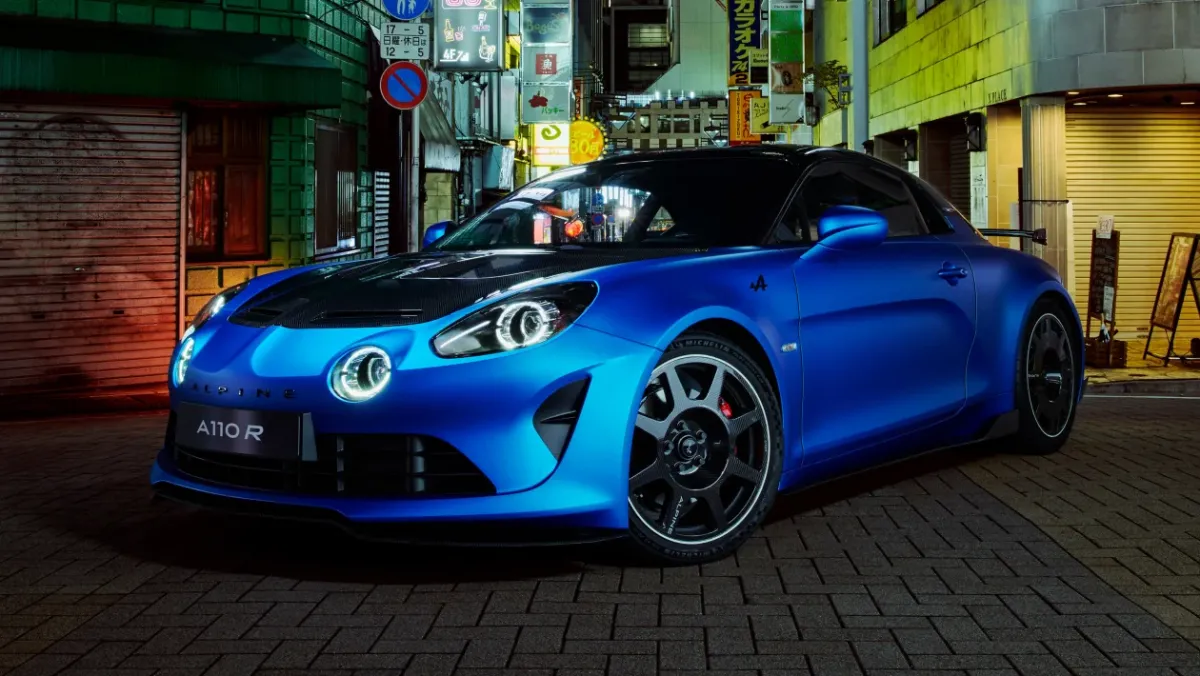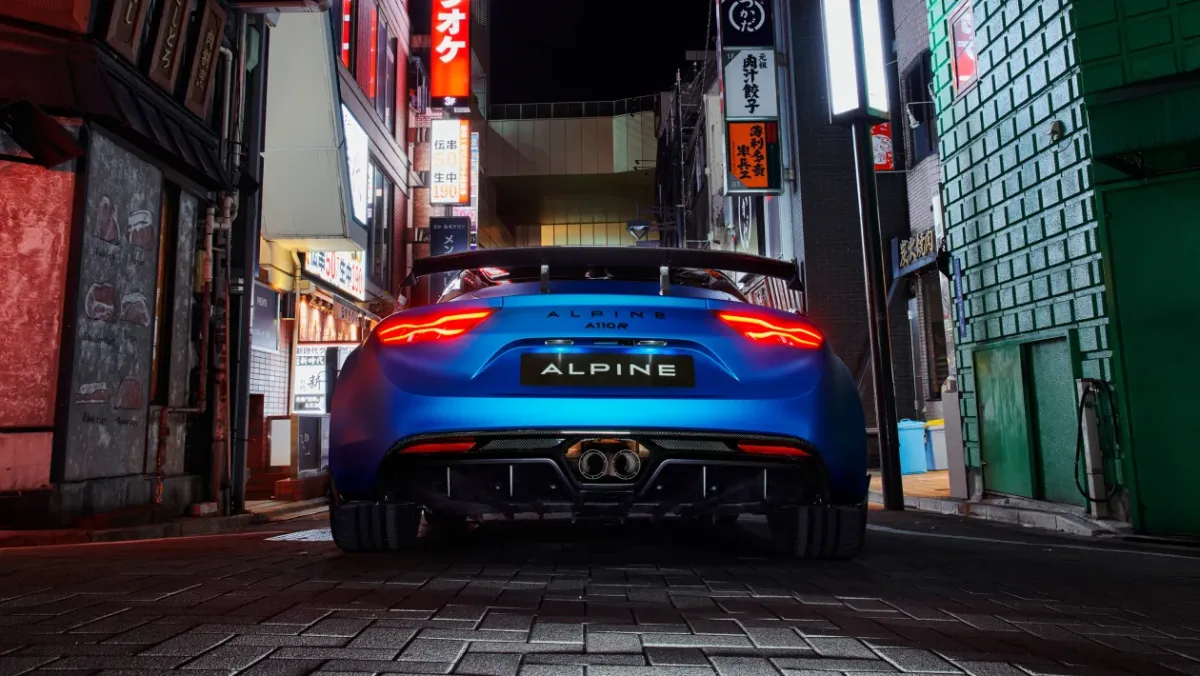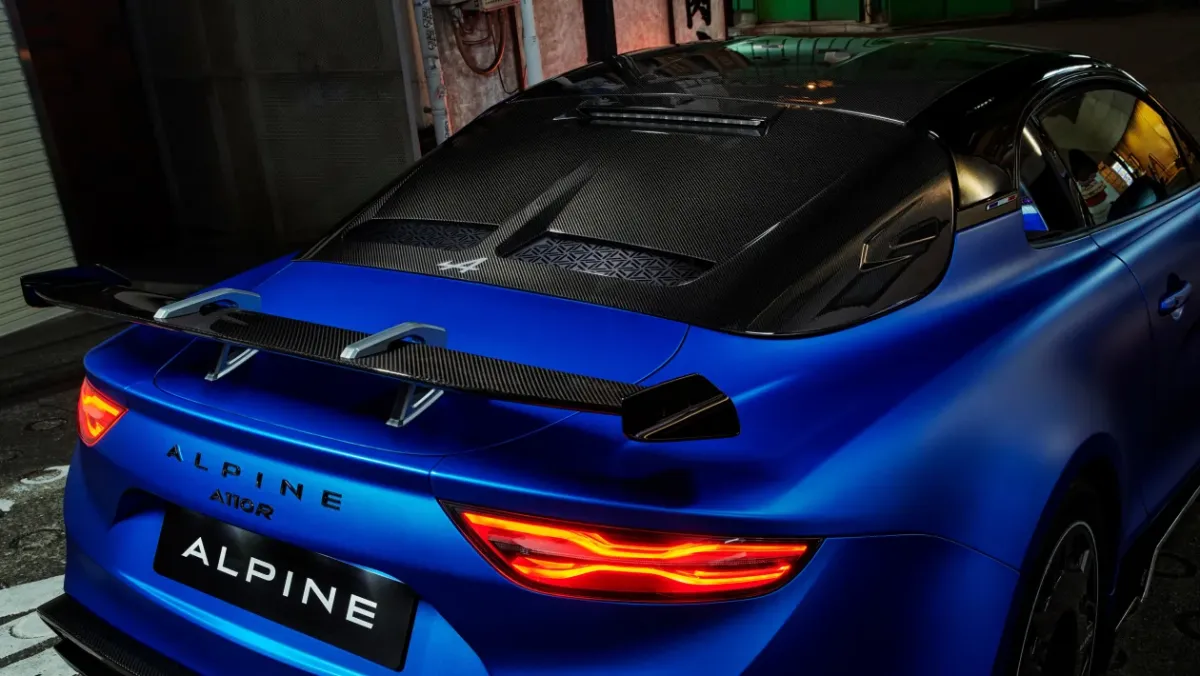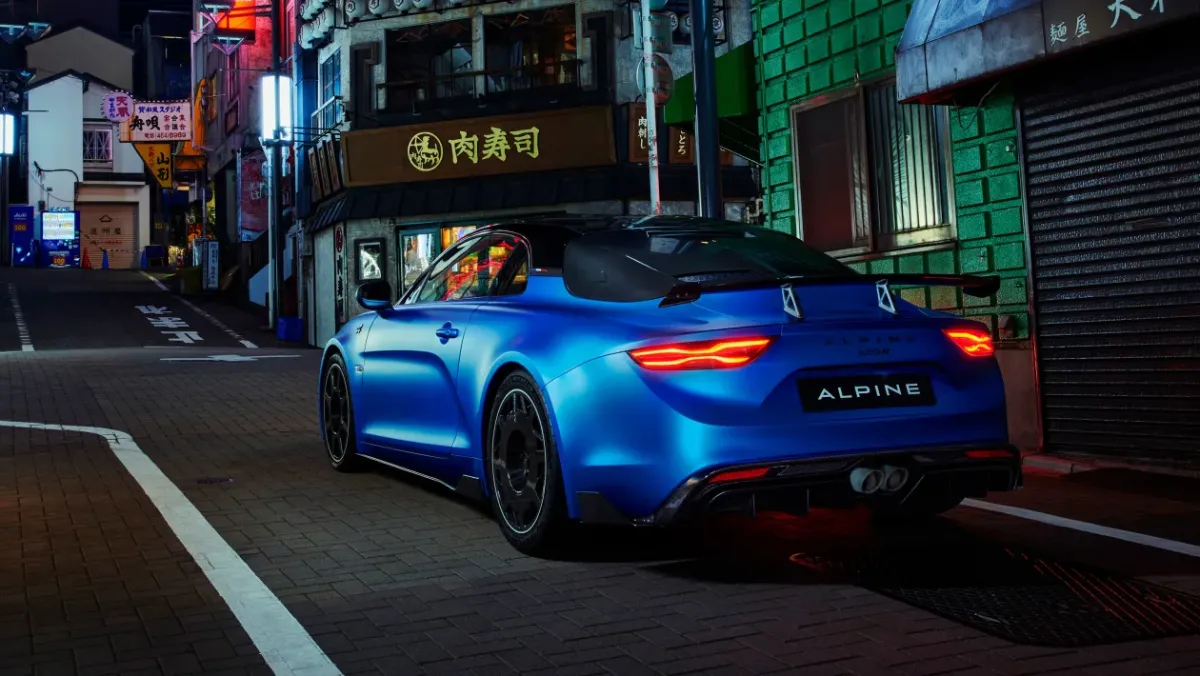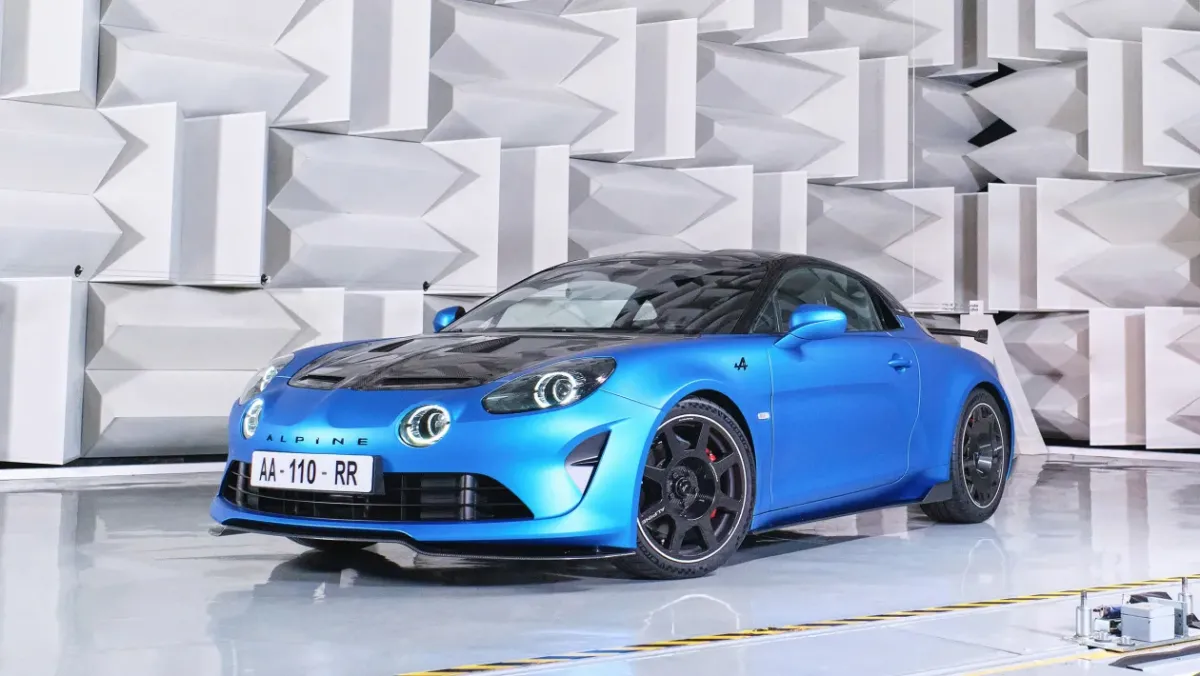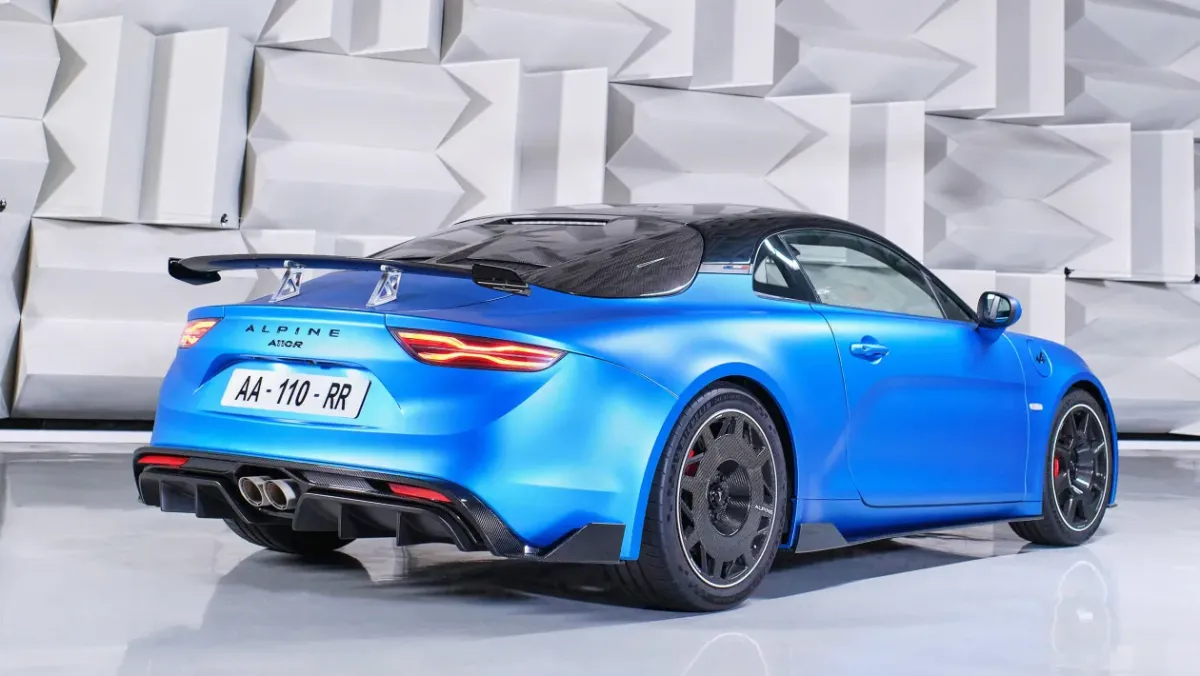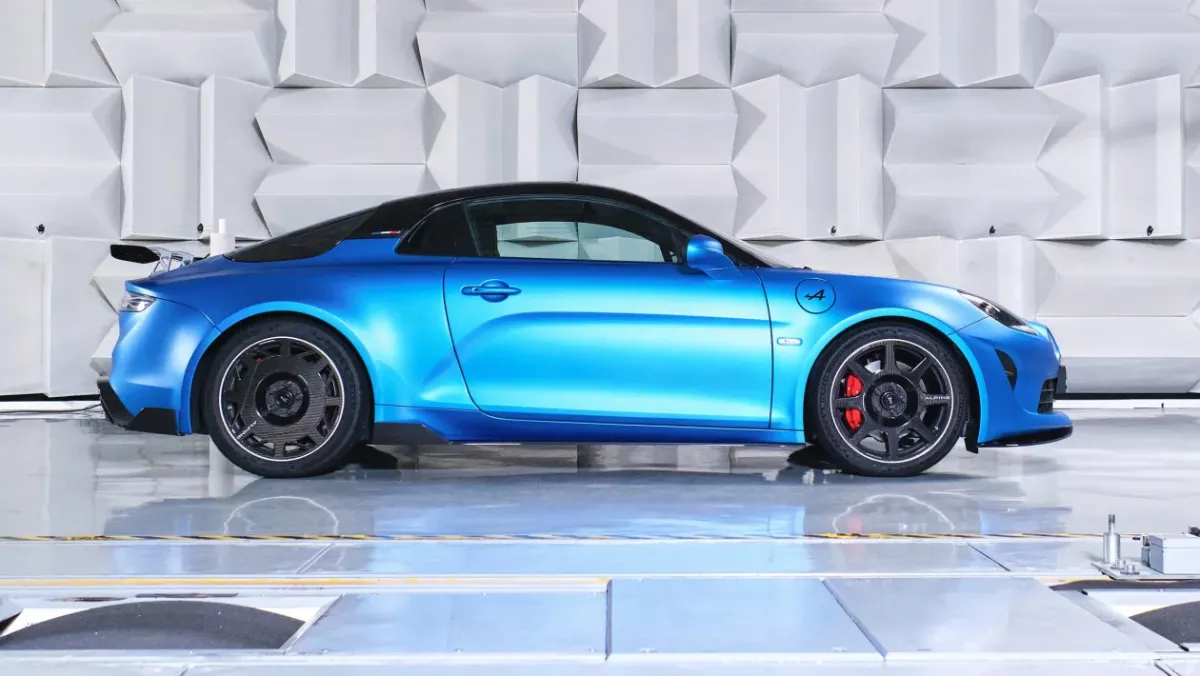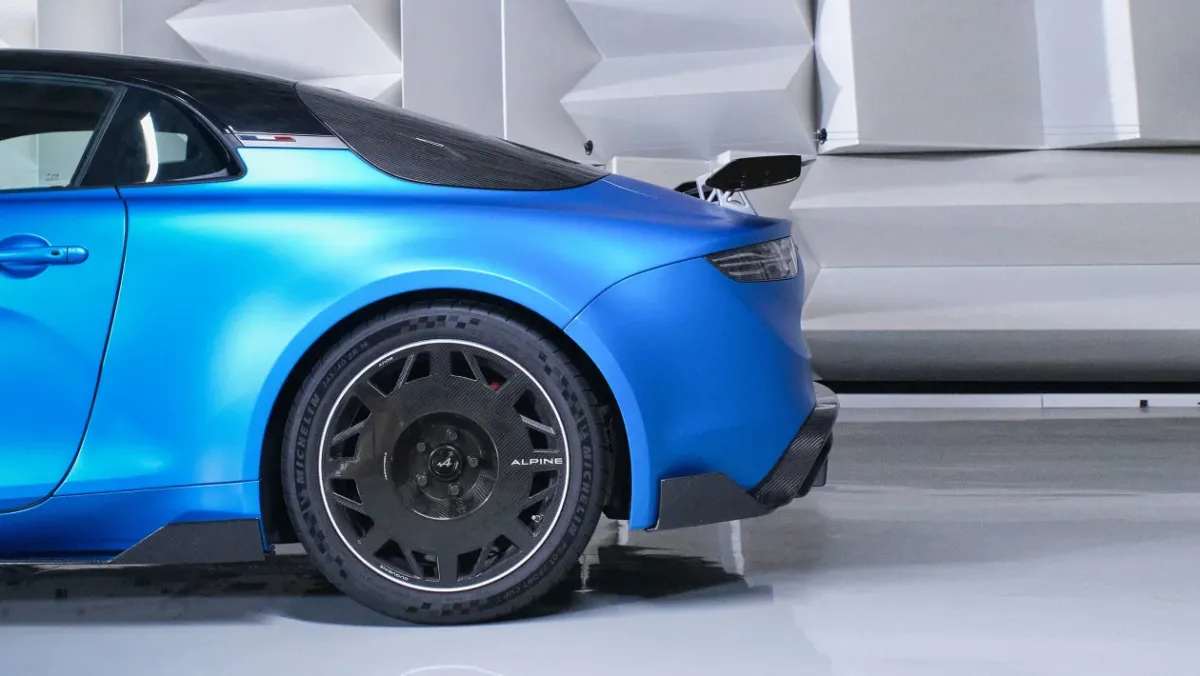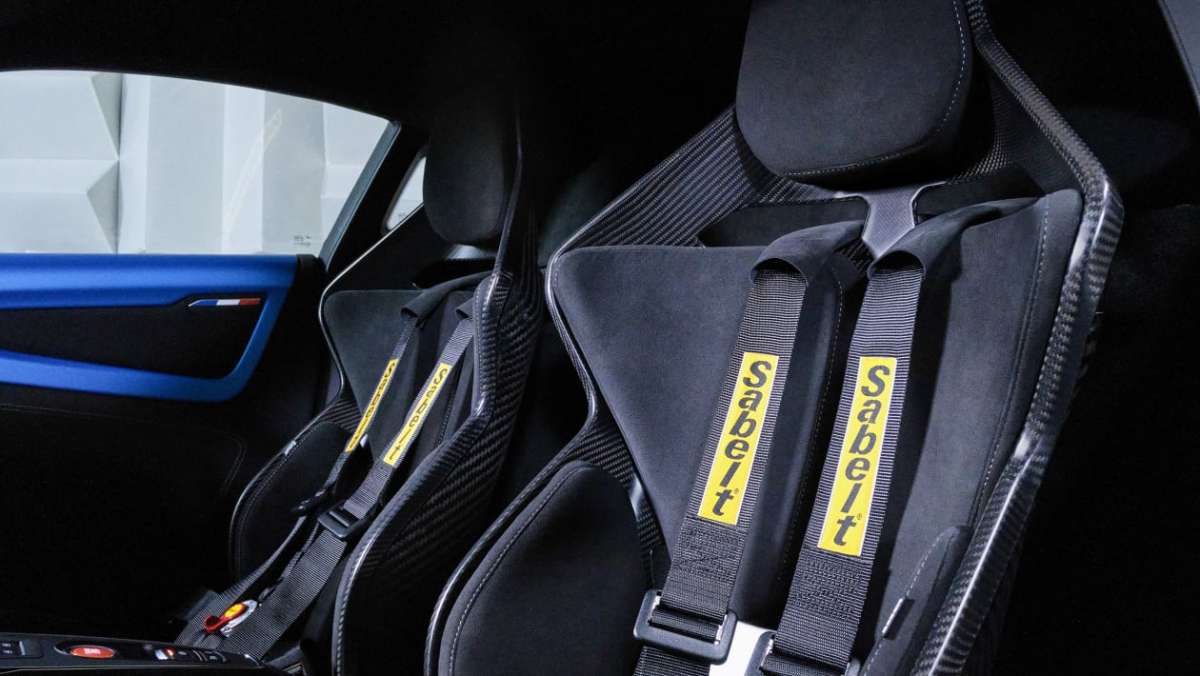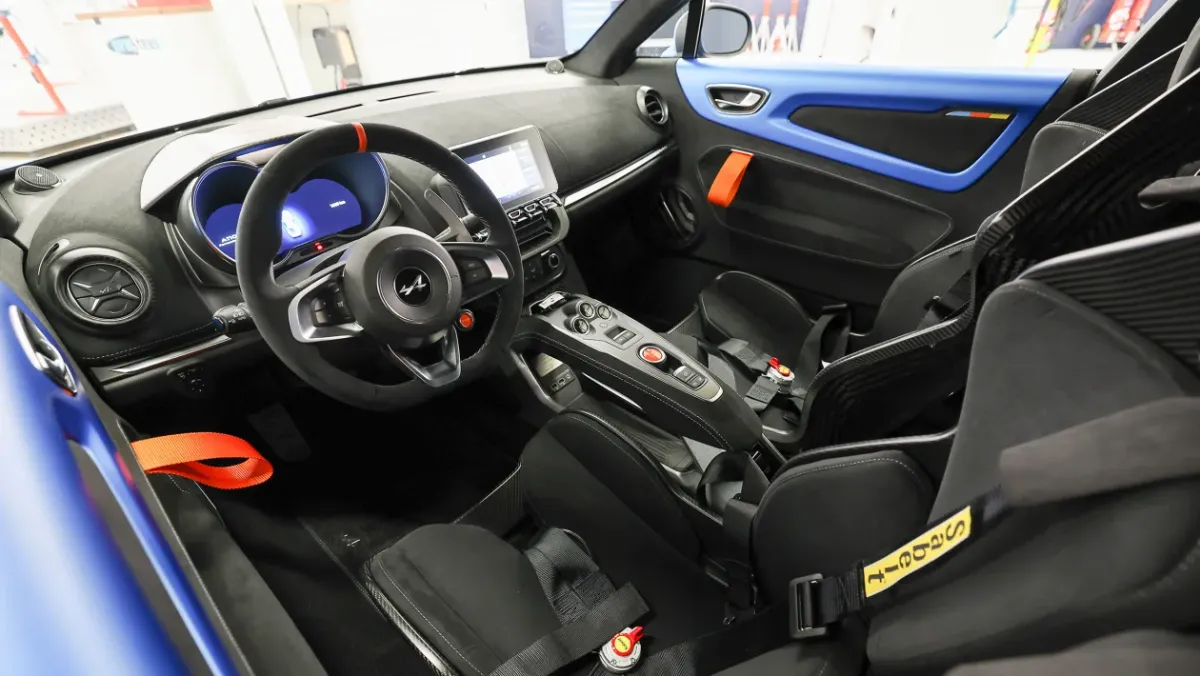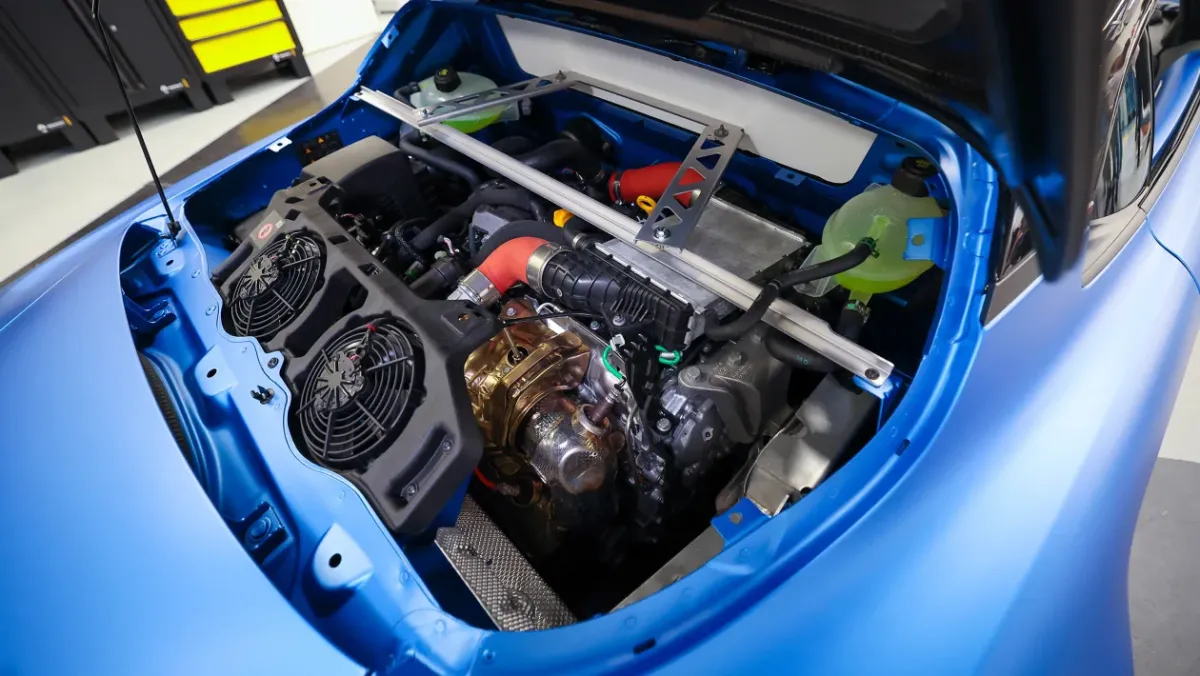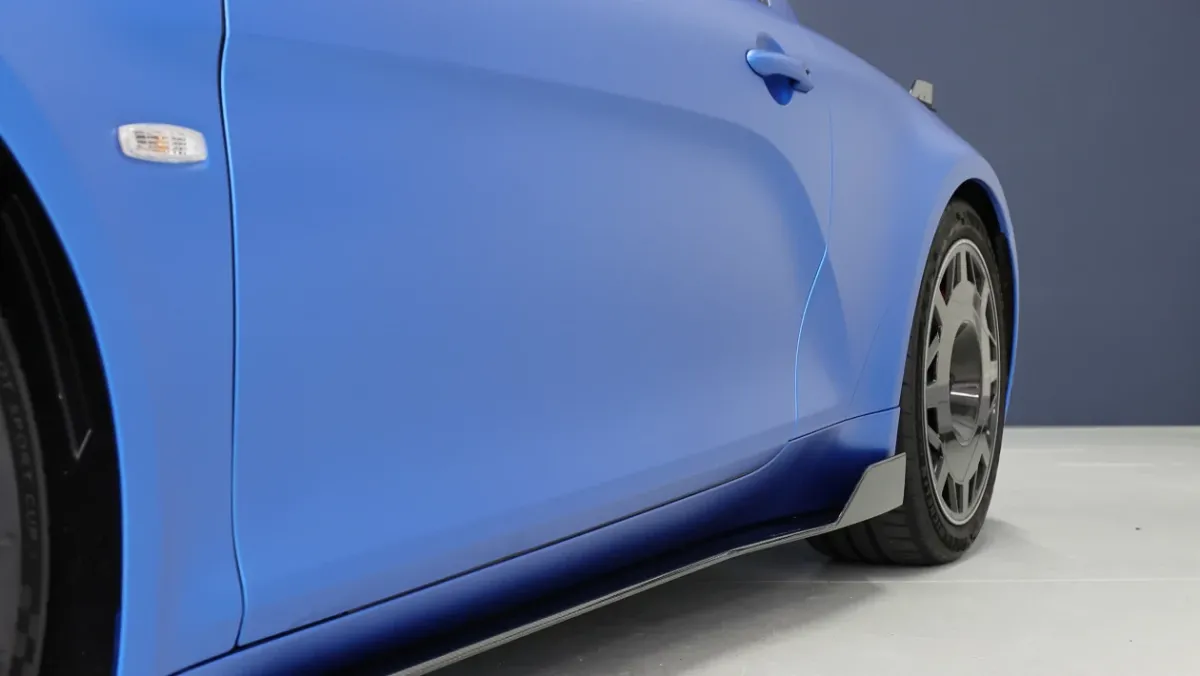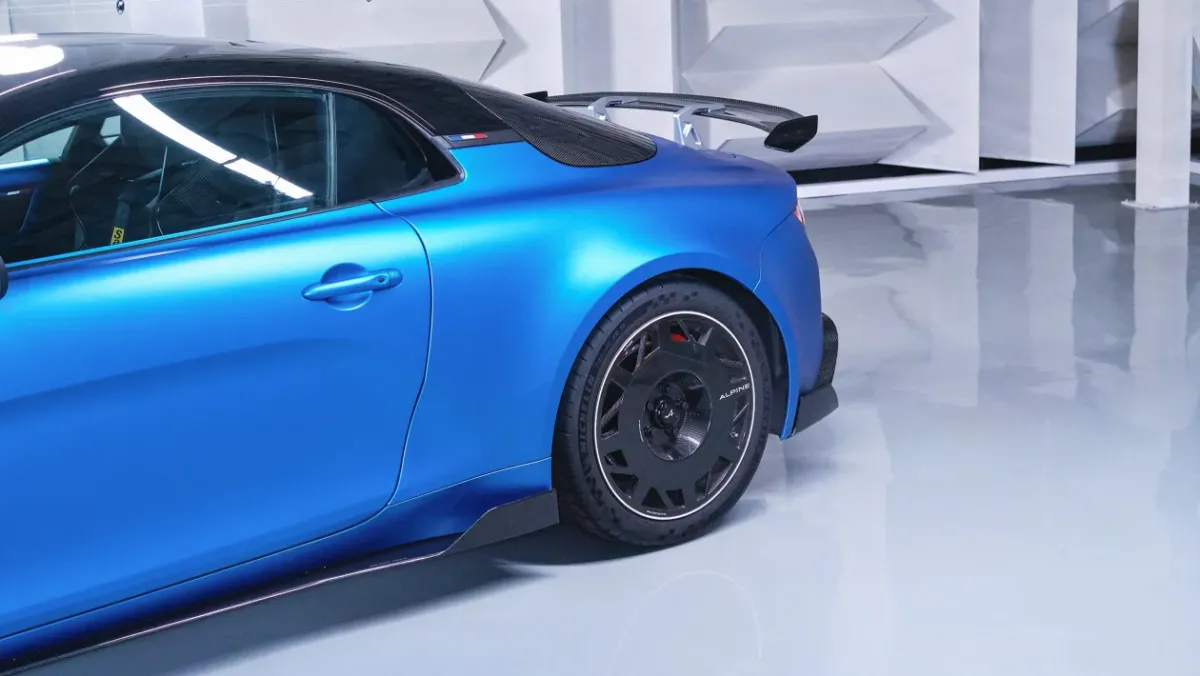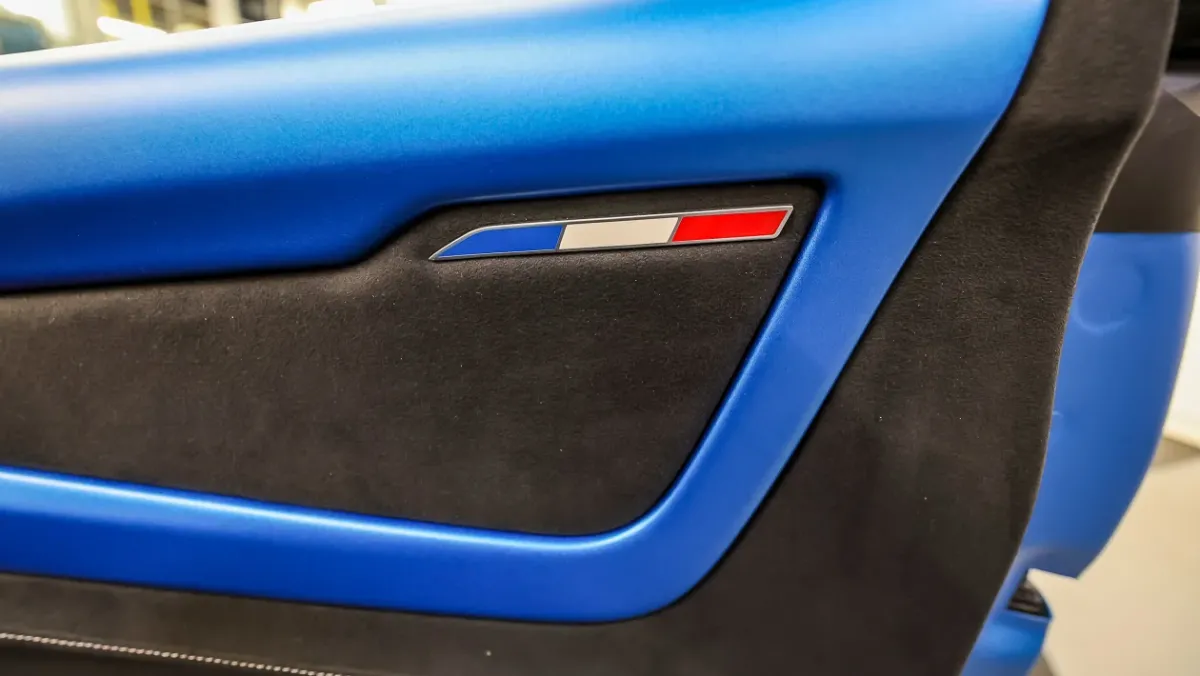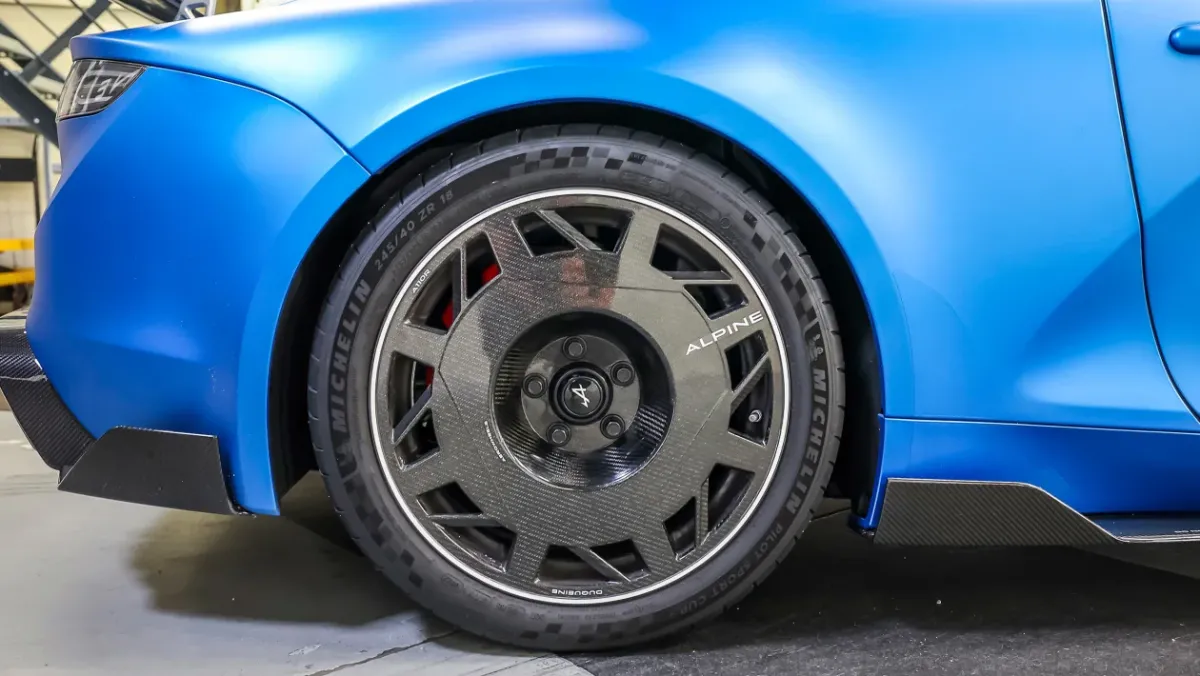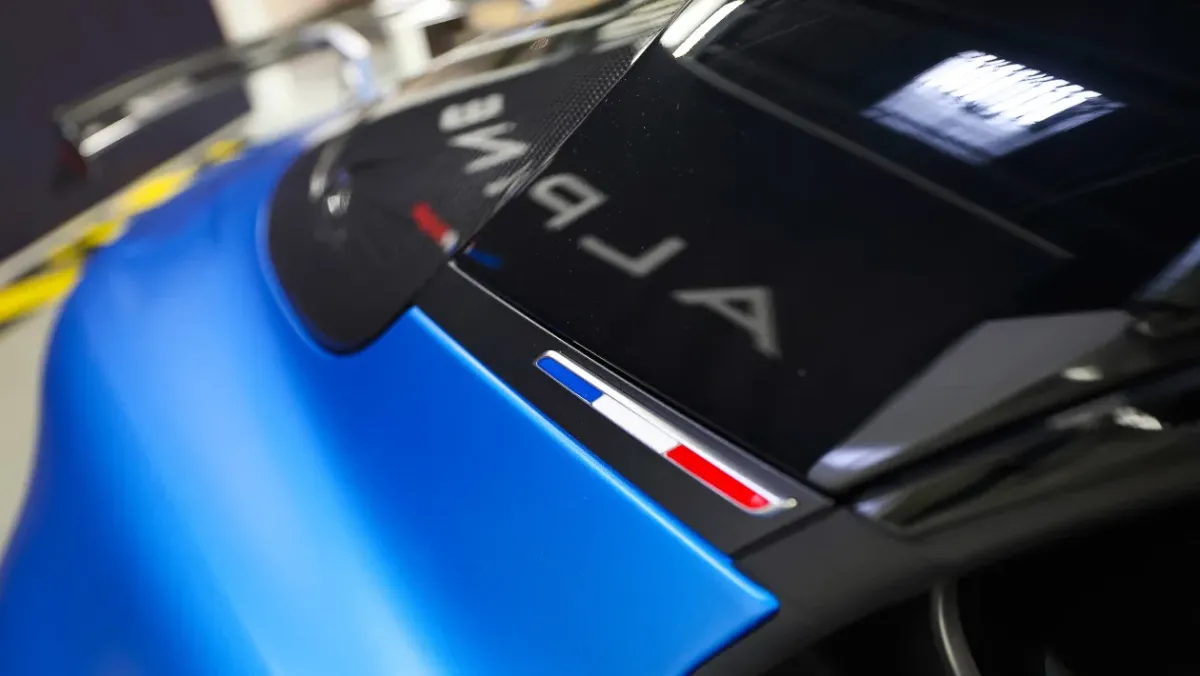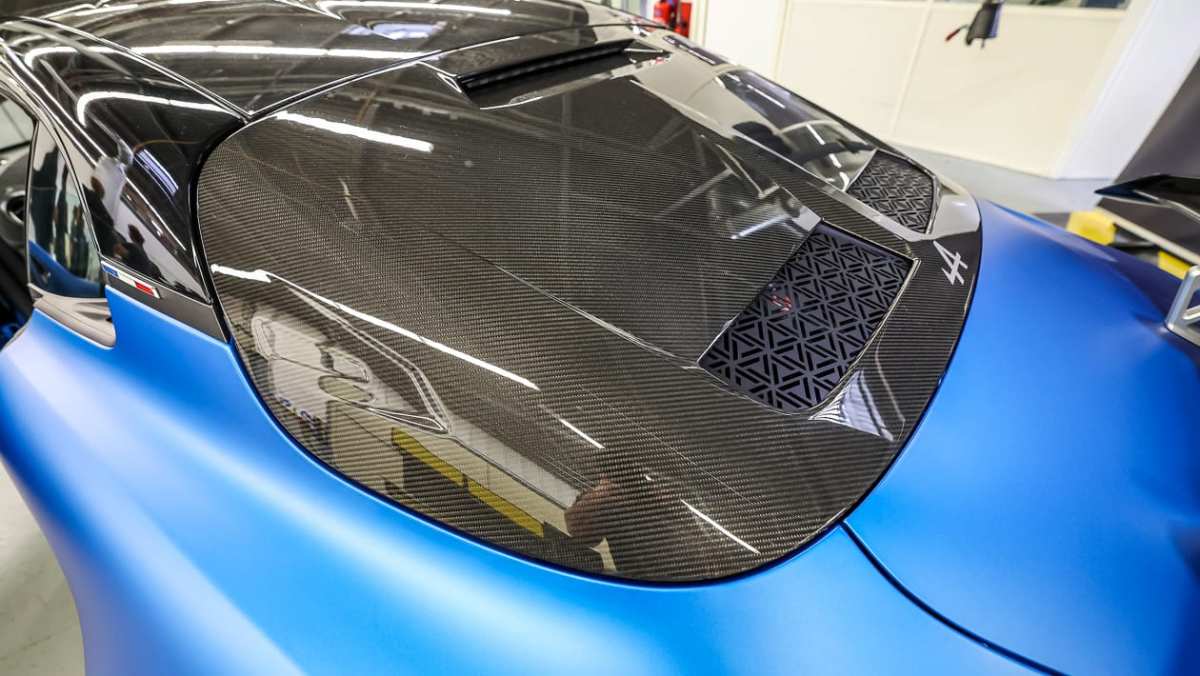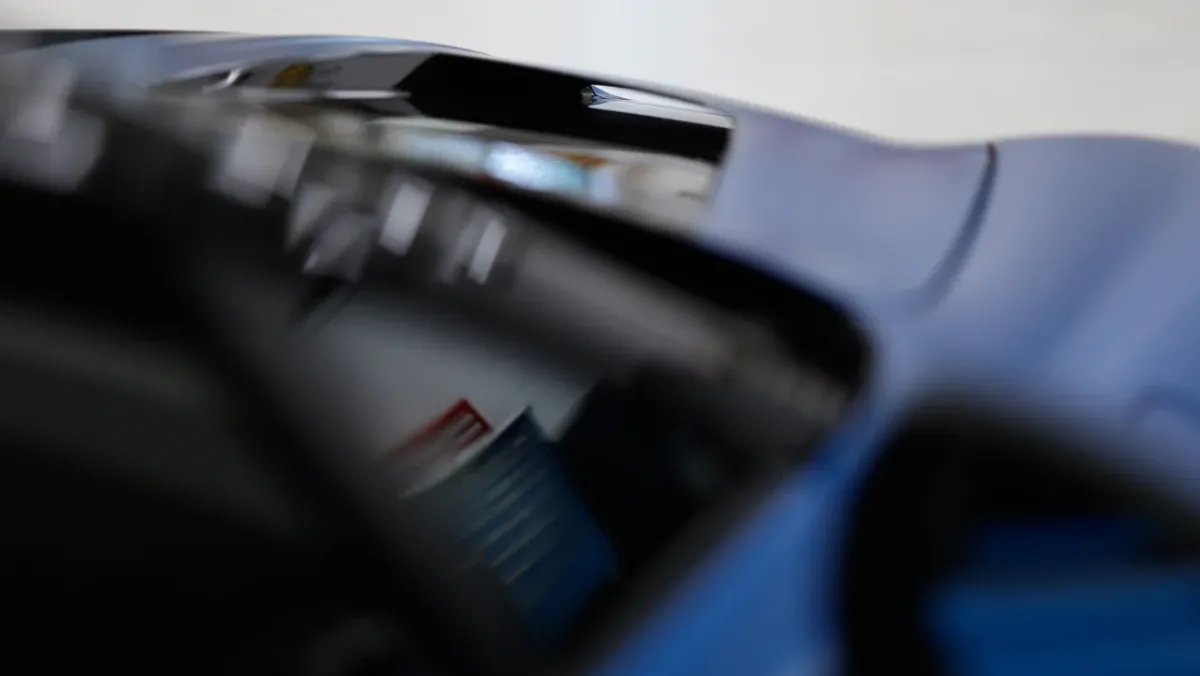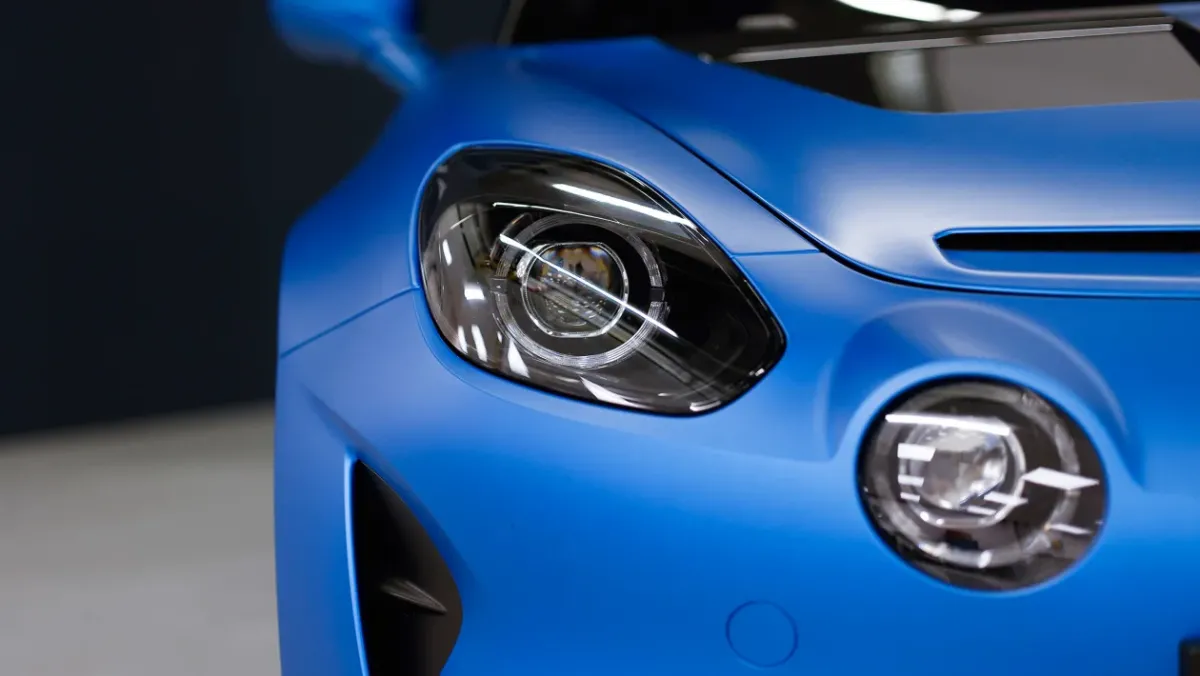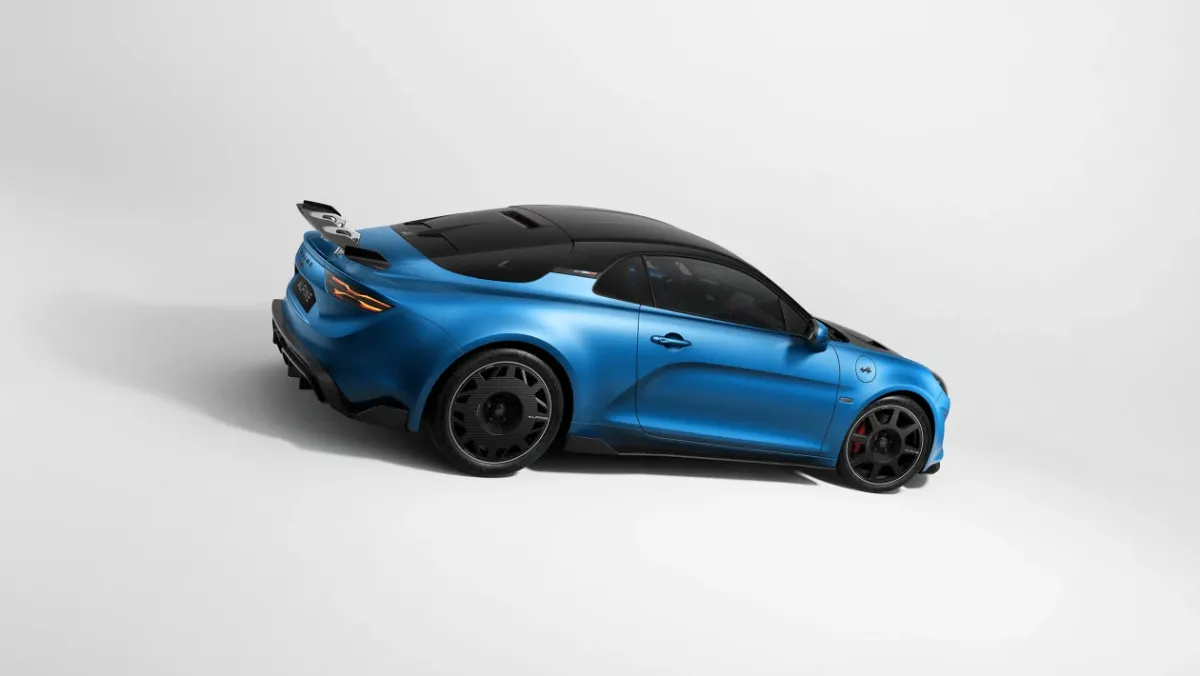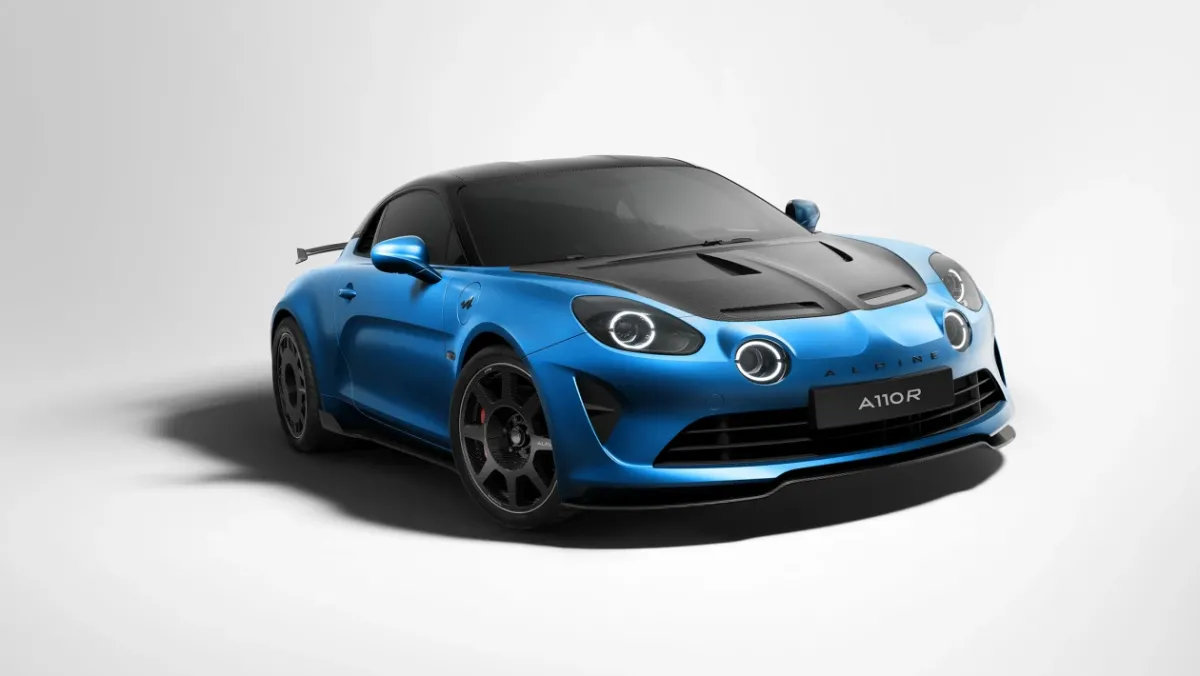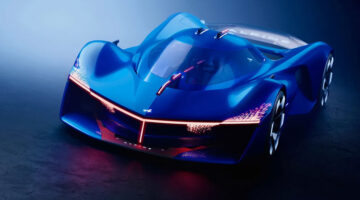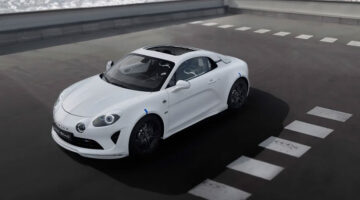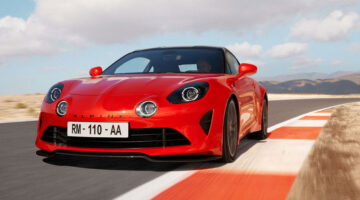The most extreme Alpine A110 yet is here, and comes with less weight and even more track-focus
The Alpine A110R is a lighter, harder and more focused version of Dieppe’s brilliant little sports car, a top-to-bottom re-evaluation of what the A110 could be. Everything from the bodywork, aero, exhaust and suspension has been revised, reformed and reset to make the R the GT4 RS of the A110 range, and there’s even a limited Fernando Alonso special. Orders will commence this October, with the range-topping Alonso special priced from c$145,000.
Limited to just 32 units worldwide, the Fernando Alonso special features the same overall package as the standard R, only with matt blue paint to match the A522 Formula 1 car, partially-painted front and rear carbonfibre elements, anodised black wing supports and orange calipers. Alonso’s blue-orange-yellow colours can be found in place of the French flag on the side of the car too, with his signature on the headrests and bonnet.
The A110R’s biggest changes apply to its chassis and aero package. The lightweight aluminium-intensive mid-engined structure remains, but to this Alpine has combined new vented carbonfibre bonnet and rear engine covers with the existing carbon roof skin. These elements are joined by new carbonfibre aero devices including a new front splitter that integrates the intake valves and produces up to 14kg of downforce on top of the front axle. These are matched to new side skirts and a much larger rear diffuser with upright endplates that reduce turbulence as the air detaches. Above sits the A110R’s most obvious addition, a much larger carbonfibre rear wing mounted on new milled aluminium swan-neck supports. The R’s wing produces 29kg of downforce.
Alpine’s partnered with composites specialist Duqueine in the development and manufacturing of new carbonfibre wheels. You might notice that these are different front-to-back, this is due to the extra cooling required for the 320mm Brembo brakes on the front axle. These are wrapped in Michelin Cup 2 rubber in staggered sizes of 215/40 R18 up front and 245/40 R18 on the back.

Alpine is quoting a kerb weight of 1082kg, 34kg lighter than the lightest A110S specification (inclusive of the carbon roof). Twelve and a half kilos of that weight reduction is derived specifically from the carbon wheels, proving how tough it is to reduce weight from an already featherweight sports car. With slight reductions in weight and grippier rubber, the A110R is the fastest Alpine by quite some margin, hitting 100kph in just 3.9sec, 0.3sec faster than an S. Top speed is 283kph, 10kph more than an S fitted with the optional aero-kit.
The A110’s general suspension layout is unchanged – there are unequal-length double wishbones all-round – but the springs and dampers have been replaced with a set of manually-adjustable coilovers. The springs are 10 per cent stiffer than an A110S on both axles, and the dampers have up to 20 clicks of adjustment for both compression and rebound giving a huge spread of variability for owners to choose from. From the factory, the A110R sits 10mm lower than an A110S, but owners can drop the ride by a further 10mm too. Alpine’s also stiffened both front and rear anti-roll bars by 10 and 25 per cent respectively.
If you were hoping for a significant rise in power, you might be disappointed to hear that the R’s engine and transmission are identical to the A110S. Power is rated at 296bhp at 6300rpm, with torque peaking at 250lb ft at just 2400rpm. These static figures are due entirely to the seven-speed dual-clutch transmission, which is at both its power and torque cap. With the A110’s development so intensely tied into Renault’s turbocharged 1.8-litre engine, it wasn’t deemed feasible to make any significant changes to the powertrain. There is a new and much more vocal exhaust system, though, with a 3D-printed double-wall exhaust outlet completing the exterior design upgrade.
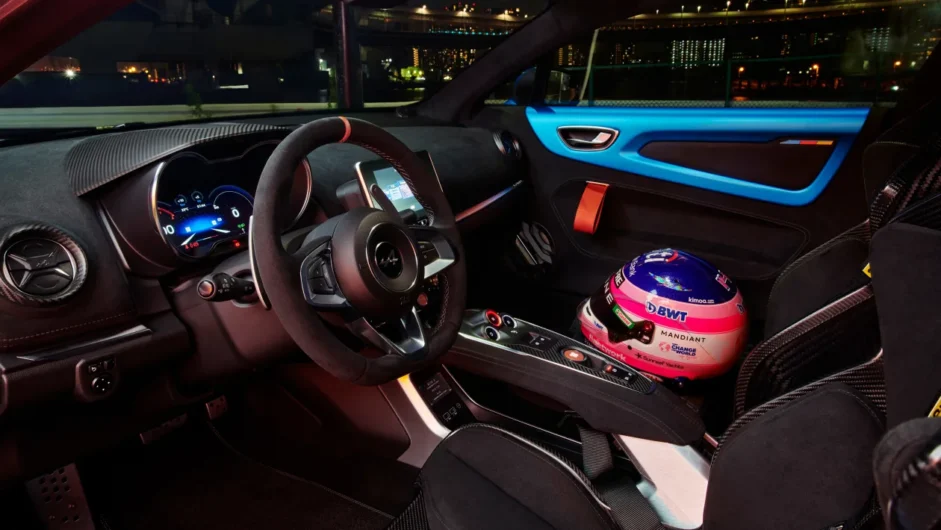
The cabin is largely unchanged, with the exception of some very serious looking new carbonfibre bucket seats from Sabelt. As well as being fixed-back (unlike the standard A110’s already excellent Sabelts), the new seats are 5kg lighter and support a standard six-point harness.
So this is the A110R, the track-focused model we’ve been rallying Alpine when it appeared in 2018. It’s formed something of a following from enthusiasts since, but has yet to gain the rampant popularity Porsche and Lotus has underpinned its business model on for decades. As well as being a hardcore model for enthusiasts, the A110R could well prove to be the model that kick starts the Alpine’s rise into mainstream popularity until its all-electric models arrive in a few years time.
This article originally appeared at evo.co.uk
Copyright © evo UK, Autovia Publishing

